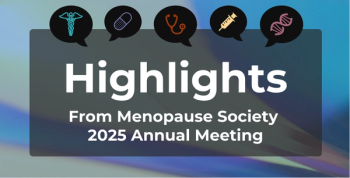
Safety Nets for Undocumented Immigrants With ESRD Fall Short
A recent investigation into the experiences of undocumented Hispanic immigrants with end-stage renal disease reveals that their inability to access regular dialysis can have devastating physical and emotional ramifications.
A recent investigation into the experiences of undocumented Hispanic immigrants with end-stage renal disease (ESRD) revealed that their inability to access regular dialysis can have devastating physical and emotional ramifications.
Some states with large undocumented immigrant populations, like California and New York, provide scheduled hemodialysis for these patients through Medicaid, but the majority of states only offer dialysis in emergency situations as required by the Emergency Medical Treatment and Labor Act and are later reimbursed by the state’s Medicaid program.
Previous studies have demonstrated that the emergent-only dialysis system is far more expensive than scheduled dialysis appointments due to more frequent emergency visits, longer inpatient stays, and increased admissions to intensive care units. However, a group of researchers from the University of Colorado, Denver, sought to assess the more qualitative aspects of this experience by interviewing 20 undocumented immigrants with ESRD who received hemodialysis the day of the interview at an emergency department or urgent care center. Their findings were
Emergent need for hemodialysis is defined as critical illness based on high potassium levels, low bicarbonate and oxygen saturation levels, uremic and neurologic symptoms, and/or severe shortness of breath. Patients usually stayed overnight after dialysis and received a second session the next day, at which point they were discharged and “typically returned 6 to 7 days later, critically ill, to repeat the cycle.”
The researchers found that the participants described 4 key themes when discussing their illness experience: distressing symptom burden and unpredictable access to emergent-only hemodialysis; death anxiety associated with weekly episodes of life-threatening illness; family and social consequences of accommodating emergent-only hemodialysis; and perceptions of the healthcare system.
Patients reported that they delayed reporting to the clinic as long as possible, even if their symptoms became life-threatening, so that they would not be turned away. Some even described consuming potassium-rich foods or beverages outside the hospital if the rest of their symptoms were severe but their potassium levels had not yet reached the benchmark for critical illness.
These frequent near-death experiences predictably took a significant toll on the participants’ quality of life and mental state, as many reported “a recurrent fear of dying that took hold each week as their symptoms began to accumulate and they awaited admission.” This anxiety over the very real possibility of death was exacerbated by witnessing the deaths of their friends they had met during dialysis.
Distress was not limited to the patients themselves, as many knew that their family members had experienced anxiety and depression as a result. Added stress was brought onto families as the patients often could not retain jobs due to the unpredictable dialysis appointments. However, the respondents said they were grateful for the support of their families and described them “as the reason they were able to persevere with emergent-only hemodialysis.”
Patients also voiced gratitude for the efforts of the healthcare professionals at the safety-net dialysis centers and were touched by their kindness and empathy. They felt fortunate to be “living on borrowed time” as this treatment would not have been available at all in their home countries.
According to the researchers, the patients’ reported experiences are an important contribution to the literature demonstrating the inefficiency of emergent-only dialysis, as prior studies have already demonstrated it is more expensive and results in worse medical outcomes. They recommended that policy makers look to examples like California, which covers ongoing and maintenance dialysis under emergency Medicaid, to “aid in identifying more humane and higher-value solutions.”
Newsletter
Stay ahead of policy, cost, and value—subscribe to AJMC for expert insights at the intersection of clinical care and health economics.













































